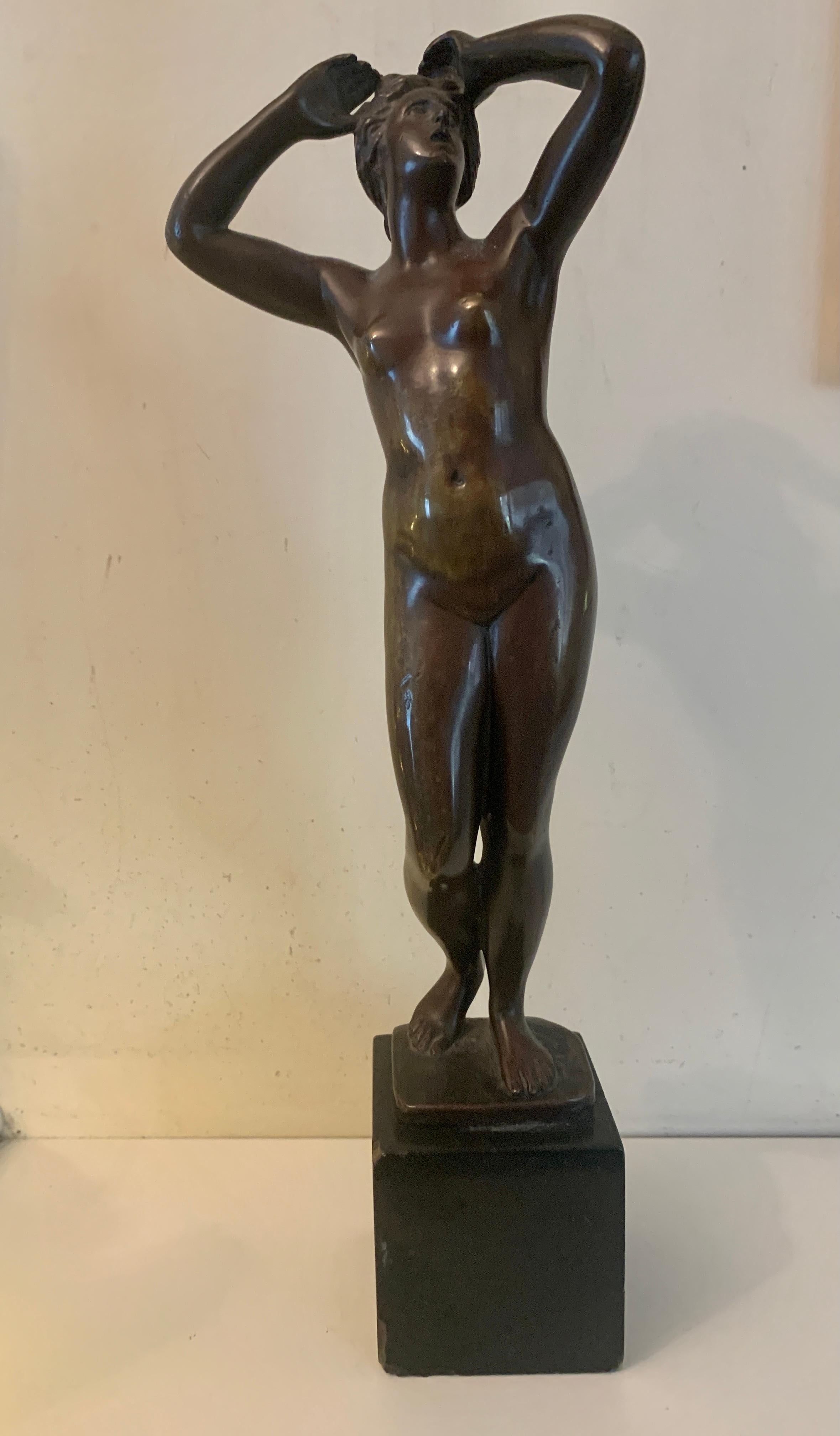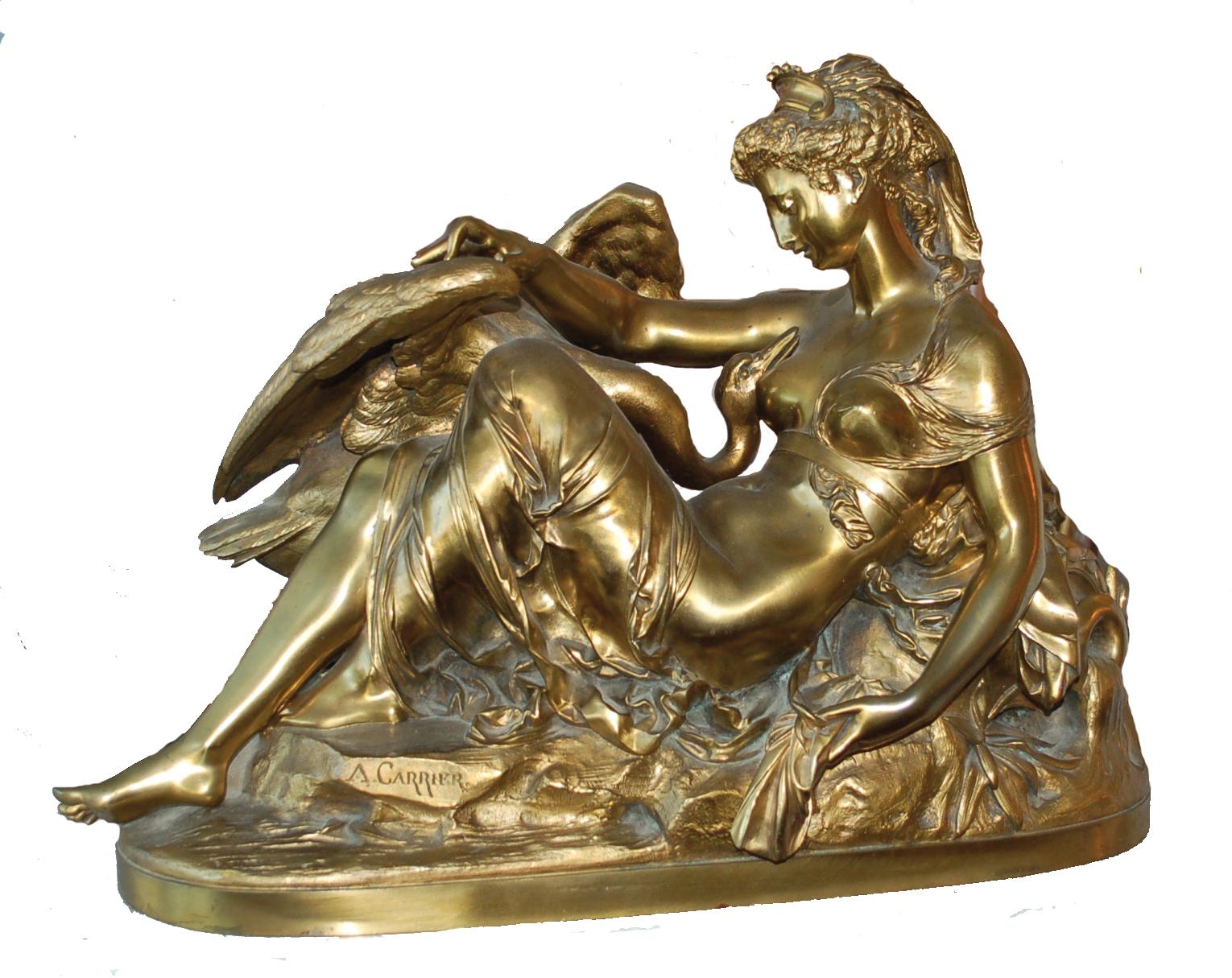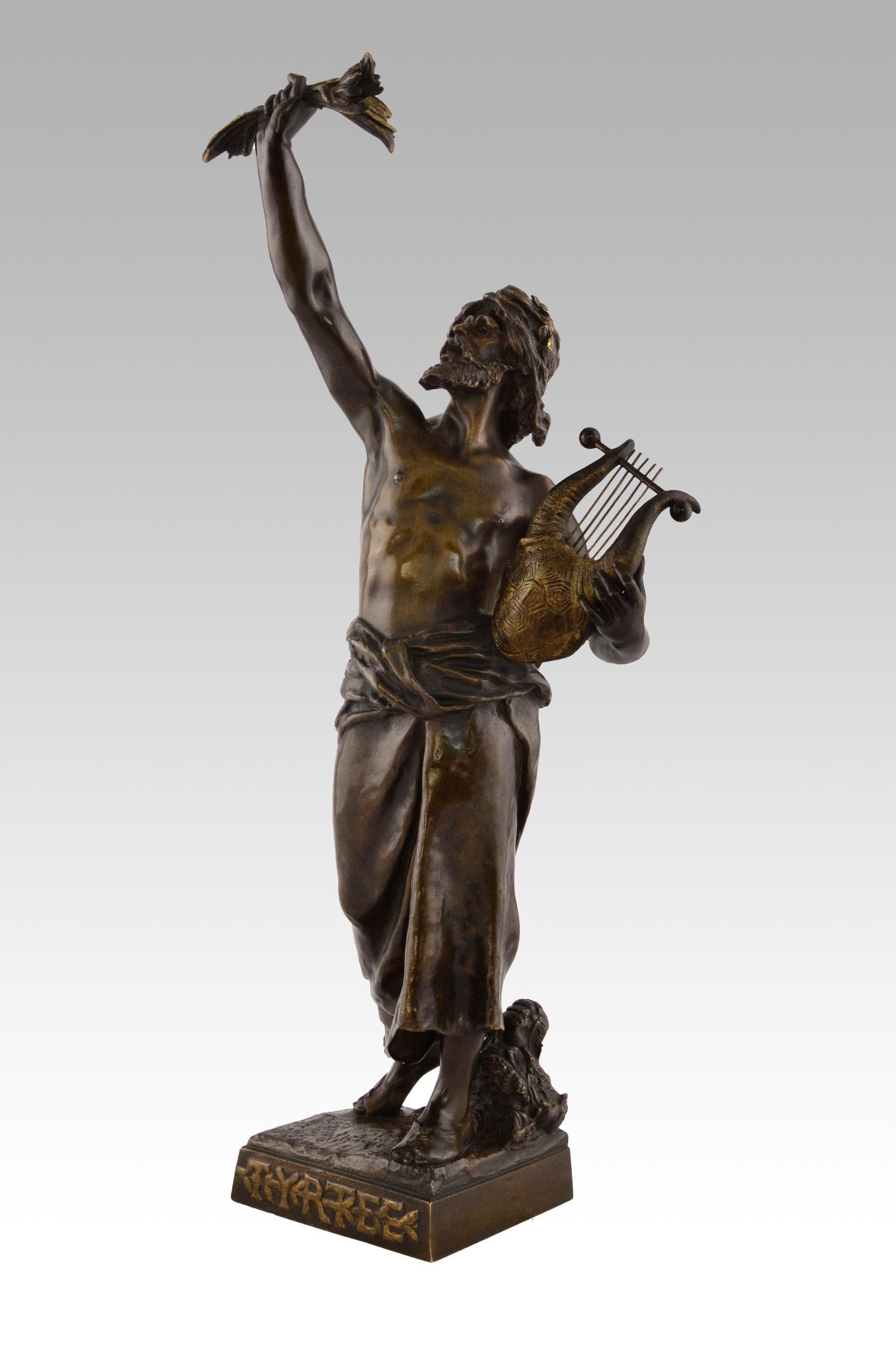Items Similar to Life Mask of Abraham Lincoln
Want more images or videos?
Request additional images or videos from the seller
1 of 5
Leonard Wells VolkLife Mask of Abraham Lincoln1860
1860
About the Item
Leonard Wells Volk was a famous American sculptor. He went to posterity after making one of only two life masks of United States President Abraham Lincoln. In 1867 he helped establish the Chicago Academy of Design and served as its president until 1878. He made several large monumental sculptures, including the tomb of the politician Stephen A. Douglas, and statues of American Civil War figures.
From 1855-1857, Stephen A. Douglas, his wife's cousin, supported the family's travel to Rome so that Volk could pursue additional study.
Returning to the United States in 1857, Volk and his family settled in the booming city of Chicago, where he helped to establish the Chicago Academy of Design, precursor to the School of the Art Institute of Chicago. For eight years, he served as its director and taught numerous students, including Elbridge Ayer Burbank, who became noted for his more than 1200 portraits of Native Americans.
In 1860 Volk made a life mask of Abraham Lincoln. Only one other was made, by Clark Mills in 1865. In the early part of spring 1860, during Lincoln's visit to Chicago, Volk asked him to sit for a bust. The artist decided to start by doing a life mask in order to eliminate the need for several sittings. Lincoln found the process of letting wet plaster dry on his face, followed by a skin-stretching removal process, "anything but agreeable". But he maintained good humor, and was pleased with the final bust. He declared it 'the animal himself'. Volk later used the life mask and bust of 1860 as the basis for other versions of Lincoln, including a full-size statue. The life mask was also studied by other artists, such as Daniel Chester French.
- Creator:Leonard Wells Volk (1828 - 1895, American)
- Creation Year:1860
- Dimensions:Height: 8.27 in (21 cm)Width: 7.88 in (20 cm)Depth: 5.52 in (14 cm)
- Medium:
- Movement & Style:
- Period:
- Condition:
- Gallery Location:London, GB
- Reference Number:1stDibs: LU67332363563
About the Seller
5.0
Vetted Seller
These experienced sellers undergo a comprehensive evaluation by our team of in-house experts.
Established in 1990
1stDibs seller since 2017
40 sales on 1stDibs
Typical response time: 4 hours
- ShippingRetrieving quote...Ships From: London, United Kingdom
- Return PolicyA return for this item may be initiated within 1 day of delivery.
More From This SellerView All
- Enormous 19th Century British Sporting Horses & Hounds Hunting Oil PaintingBy Charles Augustus Henry LutyensLocated in London, GBCharles Augustus Henry LUTYENS (1829 – 1915, British) On the Scent c.1880 Unframed 50 x 84 inches Framed 64 x 98 inches Oil on Canvas Signed Provenance: Possibly commissioned by George William Coventry, 9th Earl of Coventry (1838-1930); thence by family descent; Croome Court House Sale, Worcestershire 1948 Lord Coventry was a keen huntsman having founded the North Cotswold Hunt in 1867 and in 1882 The Croome. Besides founding two Hunts, he also held the unique distinction of owning racehorses that won two Grand Nationals in consecutive years. Daphne Moore, the hunting correspondent writing about the Croome Hounds c.1950, emphasised the influence of Rambler as a perfect type of hound. ‘Who could have dreamed that in 1949 well-bred hounds in almost every kennel in England would have at least a trace of Rambler’s blood in their veins?’ … to the hound man The Croome and the name Coventry immediately recalls Rambler. Anyone who has seen his portrait by Lutyens, will remember him as being the perfect type of hound for any country…’ Charles Lutyens the artist spent his early adult life in the Army, joining the 20th foot and siled with them in 1850 to serve in Canada. In 1857 he left the army to take up life as a professional artist. He based himself at Onslow Square...Category
1880s Victorian Animal Paintings
MaterialsOil
- 19th Century Portrait of Jerry and Dot a Pair Two Naughty FriendsBy Imogen Mary CollierLocated in London, GBImogen Mary Collier (1873-1952) Portrait of Jerry and Dot Circa. 1895-1900 Oil on Canvas 49 X 42.5 Imogen Mary Collier (1873-1952) was born in 1873 at Whitchurch, Devon, England. She was the daughter of Mortimer John Collier...Category
1890s Victorian Animal Paintings
MaterialsOil
- Luminous Oil Painting of a Horse by John Alfred Wheeler 'Bay Hunter'By John Alfred WheelerLocated in London, GBJohn Alfred WHEELER (1821-1903) A Bay Hunter oil on canvas 31 x 41 inches, inc. frame Provenance: The Parker Gallery, London John Alfred Wheeler was born in Andoversford, Gloucestershire in 1821. He was the founder of a dynasty of painters which included his sons Alfred Wheeler (1851-1932) and James Thomas Wheeler (1849-1888) and his grandsons John Frederick Wheeler and Walter Herbert Wheeler who were all skilled artists. He initially served in the army and lived in Cheltenham after being discharged. He specialised in portraits of dogs and horses as well as sporting scenes. He also produced a number of military paintings featuring horses. By 1877, he had moved to Hanwell, London where he achieved considerable success earning commissions from wealthy patrons such as the Duke of Portland...Category
Mid-19th Century Victorian Animal Paintings
MaterialsOil
- Portrait of horses, Hunters at Grass (Summer Holidays)By John Frederick Herring Sr.Located in London, GBWithin the context of British sporting art, one has to put a Herring on this scale as a jewel in the crown. Coming from a collection formed in the 1930s, this is its first change of ...Category
1840s Victorian Animal Paintings
MaterialsOil
- Striking 18th Century Portrait of the 12th Earl of CaithnessBy Sir Henry RaeburnLocated in London, GBSir Henry Raeburn (1756-1823) James Sinclair, 12th Earl of Caithness (1766-1823) Oil on Canvas 30 X 25 inches Unframed 37 X 32 inches framed Sir Henry Raeburn FRSE RA RSA (4 March 1756 – 8 July 1823) was a Scottish portrait painter and Scotland's first significant portrait painter since the Union to remain based in Scotland. He served as Portrait Painter to King George IV in Scotland. Raeburn was born the son of a manufacturer in Stockbridge, on the Water of Leith: a former village now within the city of Edinburgh. He had an older brother, born in 1744, called William Raeburn. His ancestors were believed to have been soldiers, and may have taken the name "Raeburn" from a hill farm in Annandale, held by Sir Walter Scott's family. Orphaned, he was supported by William and placed in Heriot's Hospital, where he received an education. At the age of fifteen he was apprenticed to the goldsmith James Gilliland of Edinburgh, and various pieces of jewellery, mourning rings and the like, adorned with minute drawings on ivory by his hand, still exist. Soon he took to the production of carefully finished portrait miniatures; meeting with success and patronage, he extended his practice to oil painting, at which he was self-taught. Gilliland watched the progress of his pupil with interest, and introduced him to David Martin, who had been the favourite assistant of Allan Ramsay the Latter, and was now the leading portrait painter in Edinburgh. Raeburn was especially aided by the loan of portraits to copy. Soon he had gained sufficient skill to make him decide to devote himself exclusively to painting. George Chalmers (1776; Dunfermline Town Hall) is his earliest known portrait. In his early twenties, Raeburn was asked to paint the portrait of a young lady he had noticed when he was sketching from nature in the fields. Ann was the daughter of Peter Edgar of Bridgelands, and widow of Count James Leslie of Deanhaugh. Fascinated by the handsome and intellectual young artist, she became his wife within a month, bringing him an ample fortune. The acquisition of wealth did not affect his enthusiasm or his industry, but spurred him on to acquire a thorough knowledge of his craft. It was usual for artists to visit Italy, and Raeburn set off with his wife. In London he was kindly received by Sir Joshua Reynolds, the president of the Royal Academy, who advised him on what to study in Rome, especially recommending the works of Michelangelo, and gave Raeburn letters of introduction for Italy. In Rome he met his fellow Scot Gavin Hamilton, Pompeo Girolamo Batoni and Byers, an antique dealer whose advice proved particularly useful, especially the recommendation that "he should never copy an object from memory, but, from the principal figure to the minutest accessory, have it placed before him." After two years of study in Italy he returned to Edinburgh in 1787, and began a successful career as a portrait painter. In that year he executed a seated portrait of the second Lord President Dundas. Examples of his earlier portraiture include a bust of Mrs Johnstone of Baldovie and a three-quarter-length of Dr James Hutton: works which, if somewhat timid and tentative in handling and not as confident as his later work, nevertheless have delicacy and character. The portraits of John Clerk, Lord Eldin, and of Principal Hill of St Andrews belong to a later period. Raeburn was fortunate in the time in which he practised portraiture. Sir Walter Scott, Hugh Blair, Henry Mackenzie, Lord Woodhouselee, William Robertson, John Home, Robert Fergusson, and Dugald Stewart were resident in Edinburgh, and were all painted by Raeburn. Mature works include his own portrait and that of the Rev. Sir Henry Moncrieff Wellwood, a bust of Dr Wardrop of Torbane Hill, two full-lengths of Adam Rolland of Gask, the remarkable paintings of Lord Newton and Dr Alexander Adam in the National Gallery of Scotland, and that of William Macdonald of St Martin's. Apart from himself, Raeburn painted only two artists, one of whom was Sir Francis Leggatt Chantrey, the most important and famous British sculptor of the first half of the 19th century. It has recently been revealed that Raeburn and Chantrey were close friends and that Raeburn took exceptional care over the execution of his portrait of the sculptor, one of the painter's mature bust-length masterpieces. It was commonly believed that Raeburn was less successful in painting female portraits, but the exquisite full-length of his wife, the smaller likeness of Mrs R. Scott Moncrieff in the National Gallery of Scotland, and that of Mrs Robert Bell, and others, argue against this. Raeburn spent his life in Edinburgh, rarely visiting London, and then only for brief periods, thus preserving his individuality. Although he, personally, may have lost advantages resulting from closer association with the leaders of English art, and from contact with a wider public, Scottish art gained much from his disinclination to leave his native land. He became the acknowledged chief of the school which was growing up in Scotland during the early 19th century, and his example and influence at a critical period were of major importance. So varied were his other interests that sitters used to say of him, "You would never take him for a painter till he seizes the brush and palette." In 1812 he was elected president of the Society of Artists in Edinburgh; and in 1814 associate, and in the following year full member, of the Royal Scottish Academy. On 29 August 1822 he was knighted by George IV and appointed His Majesty's limner for Scotland at the Earl of Hopetoun house. He died in Edinburgh. Raeburn had all the essential qualities of a popular and successful portrait painter. He was able to produce a telling and forcible likeness; his work is distinguished by powerful characterisation, stark realism, dramatic and unusual lighting effects, and swift and broad handling of the most resolute sort. David Wilkie recorded that, while travelling in Spain and studying the works of Diego Velázquez, the brushwork reminded him constantly of the "square touch" of Raeburn. Scottish physician and writer John Brown wrote that Raeburn "never fails in giving a likeness at once vivid, unmistakable and pleasing. He paints the truth, and he paints it with love". Raeburn has been described as a "famously intuitive"portrait painter. He was unusual amongst many of his contemporaries, such as Reynolds, in the extent of his philosophy of painting directly from life; he made no preliminary sketches. This attitude partly explains the often coarse modelling and clashing colour combinations he employed, in contrast to the more refined style of Thomas Gainsborough and Reynolds. However these qualities and those mentioned above anticipate many of the later developments in painting of the 19th century from romanticism to Impressionism. Sir Henry Raeburn died in St Bernard's House (17 St Bernards Crescent), Stockbridge, Edinburgh. He is buried in St. Cuthbert's churchyard against the east wall (the monument erected by Raeburn in advance) but also has a secondary memorial in the Church of St John the Evangelist, Edinburgh. James Sinclair, 12th Earl of Caithness was born at Barrogill Castle (Castle of Mey) on 31 May 1766. He was the son of Sir John Sinclair of Mey, Baronet who he succeeded in the baronetcy in 1774. He succeeded as 12th earl of Caithness in 1789. He was lord-lieutenant of the county of Caithness and lieutenant-colonel of the Ross-shire militia. He married at Thurso Castle on 2 January 1784 Jane, second daughter of Alexander Campbell...Category
18th Century Portrait Paintings
MaterialsOil
- 17th Century Italian Oil Painting Portrait of Music Prodigy Girolamo FrescobaldiLocated in London, GBPortrait of Girolamo Frescobaldi (1583-1643) Attributed to Antiveduto Della Grammatica (1571-1626) Oil on Canvas 1605-1609 Framed in a Nineteenth Century gild and composite frame 44....Category
Early 17th Century Baroque Figurative Paintings
MaterialsOil
You May Also Like
- 19th century French Bronze of a naked woman standing up.Located in Woodbury, CTWell modeled 19th century French bronze of a standing naked woman. Signed Cartinet, this piece is a wonderful example of the skill of a Sculptor. The piece retains all its origina...Category
1890s Victorian Nude Sculptures
MaterialsBronze
- Leda and the SwanBy Albert-Ernest Carrier-BelleuseLocated in Missouri, MOAlbert-Ernest Carrier-Belleuse (French, 1824-1887) "Leda and the Swan" c .1858 Bronze w/Gold Patina 18 x 24 x 14 Signed "A. Carrier" Based upon a c...Category
Late 19th Century Victorian Figurative Sculptures
MaterialsBronze
- 19th Century bronze sculpture of the poet Tyrtee (Tyrtaeus)Located in Nr Broadway, WorcestershireEmile Laporte French, (1858-1907) Tyrtée or Tyrtaeus Bronze, signed Height: 19 inches (48.5cm) Width: 7.5 inches (19cm) Depth: 6 inches (15cm) Emile Laporte was born in Paris on Nov...Category
19th Century Victorian Figurative Sculptures
MaterialsBronze
- 19th Century French bronze sculpture of a soldierBy Léopold Eugène KampfLocated in Nr Broadway, WorcestershireLéopold Eugène Kampf French, (1822-1893) The Last Drop Bronze, signed with foundry mark for Alfred Daubrée Height: 16 inches Width: 5 inches Depth: 5.5 ...Category
19th Century Victorian Figurative Sculptures
MaterialsBronze
- 19th Century bronze sculpture of DavidBy Louis Auguste MoreauLocated in Nr Broadway, WorcestershireLouis Auguste Moreau French, (1855-1919) David Bronze, signed Height: 7.5 inches Width: 3.25 inches Depth: 3 inches Louis Auguste Moreau was born in Dijon, France in 1855 into a fam...Category
19th Century Victorian Figurative Sculptures
MaterialsBronze
- 19th Century French bronze sculpture of a man sowing seedsBy Henri Desire GauquieLocated in Nr Broadway, WorcestershireHenri Désiré Gauquié French, (1858-1927) Fac et Spera (Do and Hope) Bronze, signed, bears seal ‘Vrai Bronze Garanti Paris’ Height: 23.5 inches Width: 13 inches Depth: 11.5 inches Henri Désiré Gauquié was born in Flers-lez-Lille on 22 October 1858. He initially studied art at the Academy of Valenciennes under René Fache. After competing in Lille, he obtained a scholarship to study at the Paris School of Fine Art at the studio of Jules Cavelier. He started exhibiting at the Paris Salon from 1881. In 1886, he won a third class medal and a travel grant from the Ministry of Public Instruction and Fine Arts for his group ‘Perseus, Vanquisher of Medusa’. This was later purchased by the State for the museum of Agen. After spending time in Italy and Belgium, Gauquié returned to France. He went on to win several other medals at the Salon including second prize in 1890 for his sculpture of Brennus and first prize in 1895 for his marble group Bacchante and Satyr , now owned by the city of Tourcoing. He also won a bronze medal at the L’Exposition Universelle in 1889, and a silver medal in 1900. In the same year he was appointed knight of the Legion of Honour and promoted to the rank of Officer of the Order of Academic Palms. He produced several public monuments in collaboration with the architect Henri Guillaume dedicated to public figures such as Alexandre Le Grand...Category
19th Century Victorian Figurative Sculptures
MaterialsBronze
Recently Viewed
View AllMore Ways To Browse
Antique Masks
American Civil War
Two Mask
Large Mask
Antique Plaster Art
Life Size Antique Sculpture
Life Size Antique Sculptures Sculpture
Plaster Life Size
Monumental Victorian
Face Mask Sculpture
Life Size Plaster Sculpture
Antique Lincoln
President Lincoln
Antique Plaster Statues
French Plaster Bust
Plaster Bust France
French Plaster Statues
Face Plaster Sculpture





